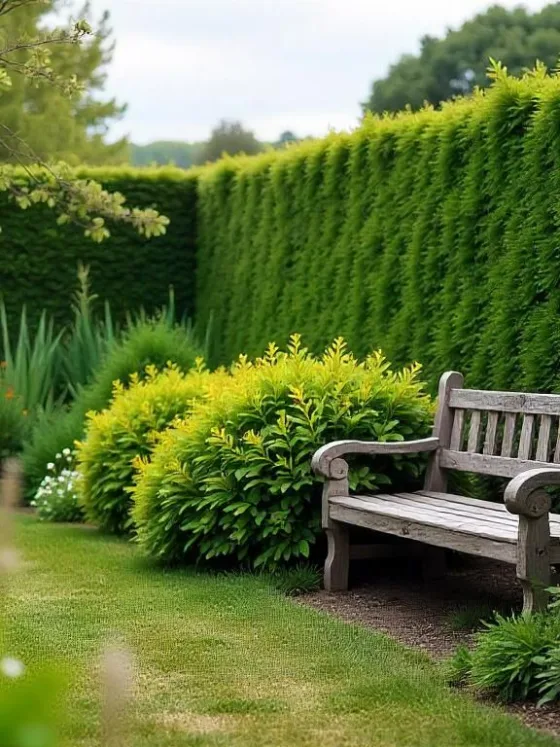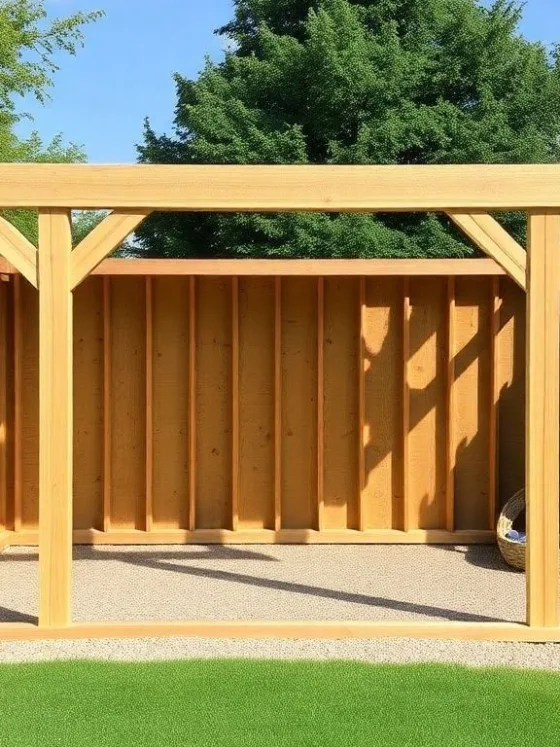Table of Contents Show
Introduction
In recent years, curbless showers have become increasingly popular in modern bathroom design. They offer a stylish and practical solution for homeowners looking to upgrade their bathing spaces. Unlike traditional showers that have a curb separating the shower area from the rest of the bathroom, curbless showers have a seamless transition from floor to shower area, creating a clean and uninterrupted look.
This innovative design not only makes the bathroom appear larger and more open but also meets current accessibility standards.
Why Choose Curbless Showers?
Accessibility for All
One of the main benefits of installing curbless showers is their focus on accessibility. These designs are specifically created for individuals with limited mobility, making it easier for them to move around the bathroom without the risk of tripping over a curb.
As more people become aware of universal design principles, curbless showers are becoming an inclusive option for people of all ages and abilities, promoting independence in personal care routines.
Improved Hygiene and Maintenance
Additionally, curbless showers can lead to better hygiene and maintenance. Without a curb, cleaning becomes simpler as there are fewer areas for soap and mold buildup, resulting in a healthier environment.
This trend is also being supported by a growing demand for minimalist designs that exude elegance and simplicity, making curbless showers an ideal choice for modern homes.
What to Expect in This Guide
In this comprehensive guide, we will explore various aspects of curbless shower installation, such as:
- Design considerations
- Materials
- Practical tips for achieving a successful outcome
By embracing the concept of curbless showers, you can transform your bathroom into a contemporary oasis while also improving the functionality and accessibility of your home.
Overview of Curbless Showers
Curbless showers are a modern bathroom design that seamlessly blends with the surrounding space. Unlike traditional showers with a raised curb or threshold, curbless showers create a smooth transition between the shower area and the bathroom floor.
This design not only looks visually appealing but also makes it easier for individuals with mobility challenges to access the shower.
Accessibility and Visual Appeal
The layout of a curbless shower often includes sloped floors for proper drainage and uses non-slip materials for safety. The flooring options can vary from porcelain tiles to natural stone, offering both style and functionality.
Many homeowners are attracted to these showers for their minimalist appearance, which can complement different interior design styles.
Maximizing Space and Enhancing Atmosphere
Bathroom design trends have evolved, and curbless showers are now in vogue. They are favored for their capacity to optimize space and elevate the room’s ambiance.
Elements such as expansive tiles and transparent dividers can further beautify the design while maintaining an unobstructed appearance. Contemporary plumbing solutions also play a role in effective water management, attracting individuals who prioritize sustainability.
Practical Benefits
The absence of a curb in curbless showers makes cleaning easier, which is seen as a practical advantage. As more homeowners choose open and inviting spaces, curbless showers are becoming a preferred option in modern bathroom renovations, meeting both aesthetic desires and functional needs.
Benefits of Modern Design and Accessibility
Curbless showers have gained prominence in contemporary bathroom designs, offering a host of benefits that encompass aesthetics, functionality, and accessibility.
Aesthetic Appeal and Spaciousness
One of the most notable aspects of curbless showers is the spacious feel they create. By eliminating the traditional curb, these showers provide an uninterrupted floor transition that visually expands the bathroom area.
This minimalist design enhances the overall look of the space, aligning well with modern interior stylistic trends that prioritize clean lines and open spaces.
User-Friendly Design
Another significant advantage of curbless showers is their user-friendliness, especially for families and individuals with mobility challenges. The absence of a step or curb eases access, making it convenient for older adults, young children, and those with disabilities to use the shower without assistance.
This feature is particularly essential in homes designed for multi-generational living, where varying mobility levels must be accommodated seamlessly.
Easy Cleaning and Maintenance
Moreover, curbless showers simplify cleaning and maintenance. The continuous floor design permits easier access for cleaning tools, eliminating hard-to-reach areas that typically gather grime and soap scum.
With fewer components and no curbs to obstruct, users can maintain a hygienic environment with minimal effort, which is a substantial advantage in busy households.
Enhanced Safety Features
Curbless showers are designed with safety in mind, significantly reducing the risk of tripping hazards. This feature is essential for preventing slips and falls, ensuring a safer bathroom for everyone. The easy entry and exit of a curbless shower instill confidence, especially in individuals recovering from injuries or facing chronic mobility challenges.
The advantages of curbless showers go beyond their sleek appearance. Their contemporary design prioritizes accessibility for people of all ages and abilities, simplifies cleaning processes, and improves safety in the bathroom. This makes them an excellent option for any modern home renovation project.
Curbless Showers vs. Traditional Showers
When considering a bathroom renovation, one of the primary decisions is the choice between a curbless shower and a traditional shower design. Each option has unique advantages and disadvantages that can significantly impact functionality, aesthetics, and maintenance.
Curbless Showers: Advantages and Disadvantages
Curbless showers, often referred to as walk-in showers, are characterized by their seamless transition from the bathroom floor to the shower area. This design enhances the visual flow and makes the space feel larger and more open.
Advantages of Curbless Showers
- Accessibility: Without a curb, they are suitable for individuals with mobility challenges, promoting safety and independence.
- Maintenance: Curbless showers tend to require less maintenance compared to traditional setups, as there are fewer crevices that can accumulate dirt and grime.
Disadvantages of Curbless Showers
- Installation Costs: They often come with a more complex installation process. The need for precise floor grading and waterproofing can demand skilled labor, resulting in potentially higher upfront costs.
- Water Containment: Depending on the design, curbless showers may require additional measures to contain water within the shower space.
Traditional Showers: Advantages and Disadvantages
Traditional showers typically involve a stepped threshold that can help contain water within the shower space. This barrier may be advantageous for those who prefer a more defined shower area, as it can minimize the risk of splashes affecting other parts of the bathroom.
Advantages of Traditional Showers
- Ease of Installation: Traditional showers are generally easier to install.
- Price Range: They have a wider range of price points, making them accessible options for various budgets.
Disadvantages of Traditional Showers
- Accessibility Issues: This design can sometimes make it less accessible for individuals with mobility issues.
- Enclosed Feeling: It could lead to an enclosed feeling in smaller bathrooms.
In the context of your bathroom renovation, weighing the pros and cons of curbless versus traditional showers will help you make a well-informed decision that aligns with your aesthetic preferences and practical requirements.
Project Overview: What to Expect
Installing a curbless shower can significantly enhance the accessibility and aesthetic appeal of your bathroom. Understanding the scope of the project is essential for a successful transformation. This overview highlights key phases, ensuring that you are well-prepared for the installation process.
1. Demolition: Preparing the Space
The first phase of the installation is demolition. This involves removing the existing shower or tub, which may include cutting through tiles or drywall and safely disposing of all debris.
Professional contractors will conduct this step carefully to avoid damaging surrounding fixtures or surfaces. Proper preparation during the demolition phase sets the groundwork for the subsequent steps, highlighting the importance of precision and attention to detail.
2. Plumbing: Adjusting for New Design
After demolition, the next major task is plumbing. A curbless shower typically requires modifications to existing plumbing to accommodate the new design. During this phase, the plumber will adjust water supply lines and install the necessary drainage systems.
Ensuring the correct slope for effective water drainage is critical to prevent future water damage and ensure optimal performance of the curbless shower.
3. Waterproofing: Protecting Your Space
Waterproofing is another crucial aspect of the project. This step involves applying a waterproof membrane to prevent leaks and damage to the subfloor and walls.
A properly installed waterproofing system is vital for any shower installation, but especially for curbless designs due to their open-concept structure. Without an effective waterproof solution, issues such as mold and mildew can arise, undermining the integrity of your newly renovated space.
4. Tiling: Adding Visual Appeal
Finally, the tiling process will enhance the visual appeal of your curbless shower. Select tiles that match your design preferences while also considering functionality and slip resistance.
Proper installation of tiles, grouting, and sealing will finalize the transformation process, ensuring that your new shower is both beautiful and durable.
Throughout each of these stages, it’s essential to maintain open communication with your contractor to ensure that expectations align and that the project meets your vision for your bathroom transformation.
Demolition and Site Preparation
Before installing a curbless shower, it’s important to carefully demolish and prepare the site. This involves removing any fixtures, tiles, or materials that may get in the way of the new design.
Tools You’ll Need
You’ll need specific tools like sawzalls for cutting through different materials and pry bars for lifting and removing stubborn parts.
Safety First
Safety should be a priority when using these tools, so make sure to wear protective gear such as goggles, gloves, and masks to protect yourself from debris and harmful dust.
Assessing the Existing Bathroom Structure
Before starting the demolition process, it’s crucial to thoroughly assess the current structure of your bathroom. Here are a few key things to look out for:
- Identify where the plumbing and electrical systems are located to avoid damaging them during removal.
- Use a utility knife to disconnect caulking around fixtures, which will help prevent any further complications.
- Protect adjacent areas by covering them with drop cloths to keep surfaces clean from dust and damage.
Dealing with Unforeseen Issues
During demolition, you may come across unexpected problems such as water damage or mold hiding beneath tiles or drywall. If this happens, it’s best to take immediate action.
Replace any damaged materials to ensure a strong and safe foundation for your curbless shower. In cases of extensive damage, it’s advisable to seek professional guidance on how to properly fix the issue.
Clearing Out Debris
Properly disposing of debris is another important part of preparing the site. Make sure to remove all broken tiles, old fixtures, and other waste materials from the area. Keeping your workspace organized will make the installation process more efficient.
By following these steps for demolition and preparation, you’ll create a solid foundation for successfully installing your curbless shower. This will ultimately transform your bathroom into a stylish and functional space.
Planning and Design
Installing a curbless shower requires careful planning and thoughtful design to ensure it works well and looks great in your bathroom. This initial phase is crucial for a successful renovation.
Visualize Your Shower Space
Start by using design software to visualize your new shower space. This will help you understand how everything fits together, including fixtures, tiles, and the overall layout. There are many applications available that allow for 3D modeling, so you can make changes before any physical work starts.
Define Dimensions and Layout
Accurately defining the dimensions and layout of your curbless shower is essential. Curbless designs have specific requirements for drainage and slope, so getting the measurements right is critical.
Consider the size of your bathroom and how the shower will flow into it. Make sure the shower is spacious enough for comfortable use while still fitting in with other bathroom elements like the vanity and toilet.
Communicate with Contractors
Effective communication with your contractors is key. It’s beneficial to hire experienced professionals who are familiar with curbless shower installations, as they can provide valuable insights and address potential issues.
Here are some tips for effective communication:
- Discuss your vision in detail
- Clearly communicate all aspects such as plumbing, waterproofing, and flooring
- Provide precise information to your contractors
Maintaining open communication throughout the installation process will help ensure that your project meets your expectations, resulting in a beautifully functional bathroom space.
Recessing and Plumbing
Installing a curbless shower is a careful process that greatly improves bathroom accessibility and looks. One important technical part of this process is recessing the subfloor to make a shower area that works well and looks good. This means lowering the subfloor where the shower pan will go.
A recessed subfloor creates a smooth transition from the main bathroom floor into the shower area, removing the need for a curb.
Recessing the Subfloor
Measuring and Cutting the Subfloor
To start the process of recessing the subfloor, follow these steps:
- Measure accurately: Use a tape measure to get precise measurements of the curbless shower area.
- Mark the space: Clearly mark the dimensions on the subfloor using a pencil or chalk.
- Cut and remove: Using a circular saw or jigsaw, carefully cut along the marked lines and remove the subfloor section.
Note: Be cautious while cutting to avoid damaging any existing floor joists or plumbing underneath.
Maintaining Structural Integrity
During the recessing process, it is crucial to ensure that the existing floor joists and structural integrity of the bathroom are maintained. Avoid making any cuts or alterations to the floor joists unless absolutely necessary.
Constructing a Sloped Shower Pan Base
Once the recess is completed, the next step involves constructing a sloped shower pan base. This slope is crucial for proper drainage, as it directs water toward the drain, preventing pooling.
- A slope of about 1-2% from the perimeter of the shower towards the drain is recommended to facilitate effective drainage.
- Use a leveling tool to ensure that the slope is consistent throughout the shower pan area.
- Consider using mortar or concrete mix to create a sturdy and waterproof base for your shower pan.
Plumbing Setup
The plumbing setup is just as important as the actual installation of a curbless shower. This involves deciding where the drain will go and making plans for the supply lines.
Drain Placement
The placement of the drain is crucial. It should be positioned in the center of the shower area to allow for efficient water flow. It’s also important to make sure that the drain is properly connected to your home’s sewage system.
Supply Lines Installation
When it comes to hot and cold water supply lines, precision is key. These lines need to be installed carefully to ensure that they are easy to use and free from leaks.
Waterproofing and Tiling Installation
Importance of Waterproofing
Effective waterproofing is critical to the longevity of a curbless shower. An industry-preferred method involves the use of a protective membrane, such as the Schluter-Kerdi system. This waterproofing membrane serves as a barrier against moisture, preventing water damage to underlying structures.
The installation process typically begins with a sloped mortar bed, which encourages water to flow toward the drain. Once the slope is established, the Schluter-Kerdi membrane is applied, requiring precise cuts at corners and around fixtures to maintain an uninterrupted waterproof layer.
Role of Tiles in Aesthetic and Functionality
Beyond waterproofing, the choice and application of tiles play a vital role in your shower’s overall aesthetic and functionality.
- When working with large format tiles, it is essential to ensure level placement, as they can be heavier and more challenging to align than smaller tiles.
- Utilizing a leveling system can assist with achieving an even surface and avoiding lippage.
- When mitering corners, accurately cutting the tile at 45-degree angles provides a seamless look.
- It is crucial to maintain a consistent grout line, enhancing the appearance of the installation.
Finishing Touches for Functionality and Elegance
Once the tiles are set, attention should turn to the finishing touches.
- Properly installing fixtures, such as showerheads and faucets, is important for functionality. Ensure that all connections are watertight to prevent leaks.
- Additionally, when adding glass enclosures, precise measurements are necessary to ensure a perfect fit and maintain the elegance of the curbless design.
- A polished finish will not only elevate the aesthetic appeal of the curbless shower but also contribute to a practical, easy-to-clean space.
Through careful waterproofing and expert tiling installation techniques, your curbless shower can offer both beauty and durability over time.
Conclusion: Enjoying Your New Curbless Shower
Installing a curbless shower can greatly improve the functionality and look of your bathroom. This guide has covered important things to think about, from planning to installation and maintenance. To successfully install a curbless shower, you need to plan and design carefully, manage your budget, and pay attention to detail during the execution.
Key Takeaways
- Set a comprehensive budget: Before starting any work, it’s crucial to establish a detailed budget that includes materials, labor costs, plumbing adjustments, and waterproofing measures. Unexpected expenses can come up, so it’s wise to set aside some money for emergencies.
- Prioritize ongoing maintenance: After installation, make sure to regularly clean and inspect your curbless shower to prevent issues like mold growth or water damage. Choose materials that are both visually appealing and easy to clean to minimize maintenance efforts.
- Gather information from trusted sources: When considering this renovation, seek advice from reliable online resources, home improvement forums, and local stores. Verify contractor qualifications, read reviews, and ask for recommendations to ensure quality workmanship.
Now is the time to enhance your bathroom with a curbless shower. Whether you prefer a sleek modern design or a cozy spa-like retreat, this renovation offers both practicality and elegance. While it may require effort and investment, the comfort and beauty it brings will be worthwhile.
FAQs:
Curbless showers enhance accessibility, making it easier for individuals with limited mobility to enter and exit the shower safely. They also simplify cleaning and maintenance, promote better hygiene with fewer crevices for soap and mold buildup, and create a visually spacious and modern bathroom aesthetic.
The installation of a curbless shower typically involves more complex procedures, such as precise floor grading, plumbing adjustments, and waterproofing. Unlike traditional showers, curbless designs require careful planning to ensure proper drainage and a seamless transition from the bathroom floor to the shower area.
Popular materials for curbless showers include non-slip porcelain tiles, natural stone, and waterproof membranes like the Schluter-Kerdi system. These materials not only enhance the aesthetic appeal but also ensure durability and functionality in a wet environment.
To maintain your curbless shower, regularly clean the tiles and fixtures to prevent mold and mildew buildup. Use gentle cleaning solutions that are safe for the materials used, and inspect the waterproofing and drainage systems periodically to ensure they are functioning effectively.
Yes, curbless showers can be designed to fit various bathroom sizes and styles. However, it is essential to consider the layout, plumbing, and drainage requirements to ensure a successful installation. Consulting with a professional can help determine the best approach for your specific bathroom space.










